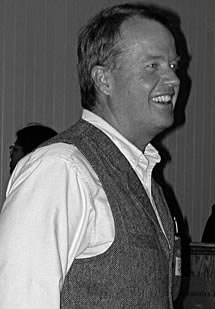The National Fire Plan
"The National Fire Plan helped us focus our conversations. It took us out of the esoteric realm of restoration to what are the needs of this community. First and foremost, it is to protect it from catastrophic wildfire. . . . The National Fire Plan helped us actually do it."
-Brain Cottam, former coordinator, Greater Flagstaff Forest Partnership, March 2004
 |
“The policy formation role needs to be played at the local level. We think because it is federal funding, we ought to have influence there, but perhaps we should focus on the local level and then let that bubble up. It’s a much, smaller, easier rock to push around, and you end up developing relationships with county commissioners, and town councils and those type of people, and you honor their role that way.” (Bob Dettmann,March 2004) |
The appeal of the National Fire Plan, officially outlined in the "10-Year Comprehensive Strategy Implementation Plan," is how effective a tool it has been in implementing on-the-ground projects in the wildland-urban interface where fire risks threaten property and lives. Few other congressional laws have been so successful at getting funding to local areas where a network of local, state, and federal institutions, academic researchers, and commercial industry businesses were organizationally prepared to take advantage of the boost NFP funding offered. One driving force was the requirement of collaboration across jurisdictional boundaries. Two key Congressional directives that: "The Secretaries of the Interior and Agriculture and the Governors jointly develop a long-term national strategy to address the wildland fire and hazardous fuels situation and the needs for habitat restoration and rehabilitation; and The strategy should be developed with " 'close collaboration among citizens and governments at all levels.'" The Four Corners Sustainable Forests Partnership was in an excellent position to capitalize on this authoritative guidance, because so much of the collaborative infrastructure needed to achieve it was already activated in the region where a history of collaborative interaction already existed; not only through the FCSFP, but through local and regional efforts that preceded the FCSFP. Also making so much possible was the fact that the implementation strategy was endorsed by major agencies and institutions, including: Departments of Agriculture and Interior, Western Governors' Association, National Association of State Foresters, National Association of Counties, and the Intertribal Timber Council. These key factors demonstrate a powerful model for future successes and for identifying what works in the organizational development of large-scale social, economic, and ecological efforts such as community-forestry.
|


